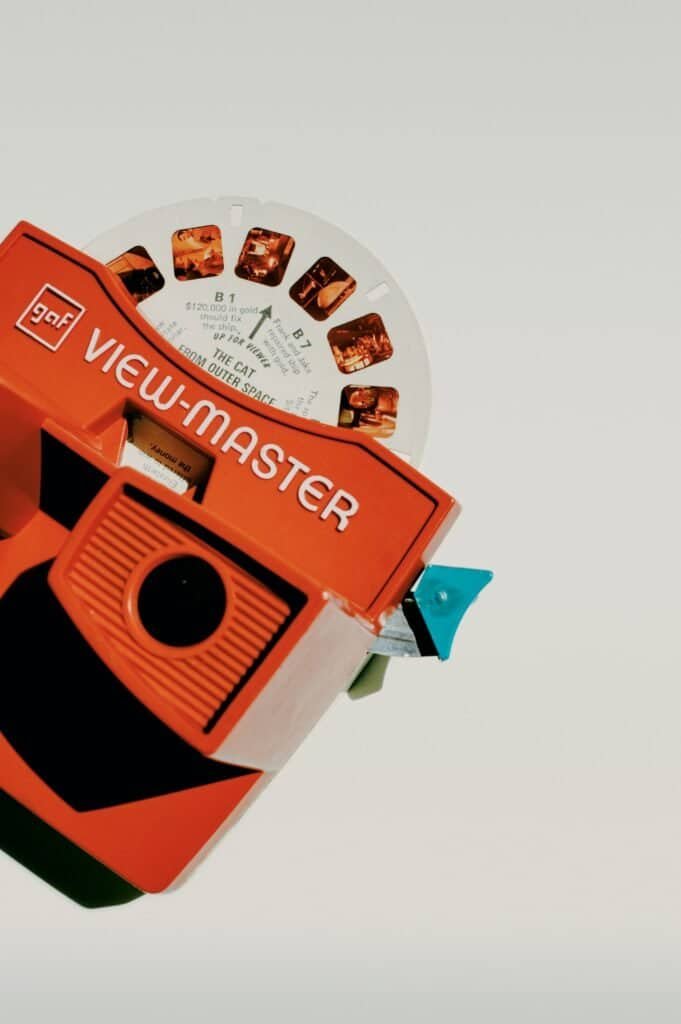So, the big debate is whether the 1980s can be classified as retro or vintage. It’s a tough question, isn’t it? On one hand, you’ve got the neon colors, big hair, and shoulder pads that scream retro, taking us back to a specific period in time. On the other hand, the 1980s has also become a part of our collective nostalgia, with its music, movies, and fashion making a comeback in recent years. But what’s the ultimate verdict? Is it retro or vintage? Let’s dig deeper into this fascinating topic and unravel the mystery behind the 1980s’ classification.

This image is property of images.unsplash.com.
Understanding the Terminology
Defining ‘Retro’
When it comes to fashion, music, movies, or any other aspect of culture, the term ‘retro’ refers to anything that imitates or is inspired by styles from the past. Retro styles often take elements from a specific time period and incorporate them into contemporary designs. The aim is to evoke nostalgia and pay homage to a particular era. In the retro fashion world, for example, you might find 1950s-inspired dresses or 1970s-inspired flared jeans. Retro styles have a modern twist, allowing individuals to enjoy the best of both worlds – a mixture of nostalgia and contemporary fashion.
Defining ‘Vintage’
On the other hand, ‘vintage’ refers to items that are genuinely from a past era. These items are typically at least twenty years old and embody the authentic style and design of that era. Vintage items can include clothing, accessories, furniture, or any other item from the past. The appeal of vintage lies in its uniqueness and the stories it tells. Each vintage piece carries a sense of history and character that cannot be replicated by modern designs. Moreover, the quality and craftsmanship of vintage items often exceeds that of their contemporary counterparts.
Common Misconceptions
While the terms ‘retro’ and ‘vintage’ are often used interchangeably, it is important to understand the distinction between the two. One common misconception is that anything old or from the past can be considered vintage. However, vintage specifically refers to items from a particular era, with a twenty-year benchmark. Another misconception is that all retro styles are vintage. While retro styles are imitations or inspirations from the past, they can be created and purchased in the present, making them distinct from true vintage items.
1980’s Fashion: Retro or Vintage?
Defining the 1980’s Fashion Period
Let’s dive into the fascinating world of 1980’s fashion and explore whether it falls under the retro or vintage category. The 1980s were marked by bold and vibrant trends, reflecting the exuberance and excesses of the decade. This period witnessed innovative fashion choices, including shoulder pads, neon colors, leg warmers, big hair, and parachute pants. These distinctive trends defined the look of the 80s and continue to be associated with the decade.
How 1980’s Fashion Reflects Retro
The fashion trends of the 1980s were undeniably retro in nature. With their nods to 1950s styles, such as form-fitting dresses and high waists, the 80s represented a revival of sorts. The exaggerated silhouettes and bright colors that defined 1980s fashion were reminiscent of the mod and psychedelic styles of the 1960s. By borrowing elements from the past and reinterpreting them in a modern context, 1980s fashion embodied the essence of retro.
How 1980’s Fashion Reflects Vintage
While 1980s fashion can be considered retro, it does not entirely fall under the vintage category. The key distinction lies in the fact that vintage items are authentically from the past, while 1980s fashion is a contemporary take on past styles. However, as time passes, some pieces from the 1980s are now considered vintage. In particular, designer pieces from iconic fashion houses like Chanel or Versace have become highly sought after by collectors and fashion enthusiasts. These authentic items from the 1980s exemplify vintage fashion.
1980’s Music: Retro or Vintage?
Understanding 1980’s Musical Influences
To determine whether 1980s music should be labeled as retro or vintage, we must first understand the cultural influences of the time. The 1980s was a transformative era for music, with various genres and subcultures emerging. From the rise of MTV and music videos to the advent of electronic synthesizers, the 80s saw a fusion of different styles and influences. Iconic artists like Michael Jackson, Madonna, Prince, and Queen dominated the music scene with their distinctive sounds and visuals.
Analysis of a retro 1980’s Musical Style
The music of the 1980s undeniably embraced retro elements. The decade witnessed a resurgence of 1960s and 1970s-inspired genres, such as new wave, synth-pop, and post-punk. Bands like Depeche Mode, Duran Duran, and The Cure incorporated electronic sounds, catchy melodies, and fashion-forward aesthetics into their music. The retro influences in 1980s music were evident in the use of vintage synthesizers, classic guitar riffs, and nostalgic lyrical themes.
Analysis of a vintage 1980’s Musical Style
While the 1980s music scene heavily borrowed from earlier decades, it does not fully qualify as vintage. Vintage music refers to music from a specific era that embodies the distinct characteristics and sounds of that time. Although the 1980s borrowed from previous eras, it brought its own innovations and modernized the sound by incorporating new technology. However, as time passes, certain artists and albums from the 1980s are now considered vintage, contributing to the rich tapestry of music history.
1980’s Automobiles: Retro or Vintage?
The Significance of 1980’s Car Designs
In the realm of automobiles, the 1980s were a period of rapid innovation and aesthetic experimentation. Car designs during this era ranged from boxy and angular to sleek and aerodynamic, reflecting the technological advancements and shifting tastes of the time. Iconic vehicles like the DeLorean DMC-12, the Chevrolet Camaro, and the Volkswagen Golf GTI became synonymous with the 1980s and still capture the imagination of car enthusiasts today.
How 1980’s Automobiles Reflect Retro
The automobile designs of the 1980s undoubtedly embraced retro aesthetics. With their sharp angles and boxy shapes, many vehicles from this era hearkened back to the styling of the 1960s and 1970s. These retro-inspired designs were an intentional nod to the past, evoking a sense of nostalgia and timeless appeal. The use of chrome detailing, vinyl roofs, and distinctive colors further emphasized the retro feel of 1980s cars.
How 1980’s Automobiles Reflect Vintage
Unlike clothing or music, the classification of automobiles as vintage is somewhat more rigid. Vintage cars are typically defined as those produced between the 1910s and the late 1930s. However, as time progresses, older vehicles eventually fall into the vintage category. This means that as we approach the 2020s, some cars from the 1980s will start to be considered vintage by the traditional definition. These vehicles will not only embody the retro qualities of the era but also hold historical value and add to the vintage car market.

This image is property of images.unsplash.com.
1980’s Electronics: Retro or Vintage?
Summary of 1980’s Electronic Trends
The 1980s witnessed a technological revolution that forever changed the world. From the birth of personal computers to the advent of video game consoles, electronics played a central role in shaping the way we live, work, and entertain ourselves. The 1980s also saw the rise of consumer electronics such as VCRs, Walkmans, and boomboxes, which became symbols of the era.
Retro Characteristics in 1980’s Electronics
The electronics of the 1980s embraced numerous retro characteristics. The design of devices like the original Apple Macintosh computers and the Nintendo Entertainment System (NES) drew inspiration from the futuristic aesthetic of the 1960s and 1970s. With their bold colors, geometric shapes, and chunky buttons, these electronics exuded a distinct retro charm. The use of cathode-ray tube (CRT) displays and analog technology further reinforced the retro feel of 1980s electronics.
Vintage Characteristics in 1980’s Electronics
While 1980s electronics can be considered retro, they do not typically qualify as vintage just yet. Vintage electronics typically refer to devices from the early 20th century up until the 1960s. However, as time passes, certain electronics from the 1980s may gain vintage status. The qualities that define vintage electronics, such as rarity, historical significance, and collectibility, will emerge as they age. In the meantime, 1980s electronics continue to hold a firm place in the retro market, appealing to those seeking a nostalgic connection to the past.
1980’s Movies: Retro or Vintage?
Overview of 1980’s Film Industry
The 1980s were a dynamic and transformative period for the film industry. Hollywood experienced a surge in blockbuster films and the birth of influential directors. Movies such as “Back to the Future,” “E.T. the Extra-Terrestrial,” “Indiana Jones and the Raiders of the Lost Ark,” and “Blade Runner” captured the imagination of audiences worldwide. These films pushed the boundaries of storytelling, special effects, and visual aesthetics.
Retro Aspects in 1980’s Cinematography
Cinematography in 1980s movies drew heavily from past eras, embodying retro characteristics. The use of practical effects, miniatures, and optical filmmaking techniques paid homage to the golden age of cinema. Additionally, many films of this era embraced a nostalgic tone, taking inspiration from classic Hollywood genres like film noir or the space-age science fiction films of the 1950s. The incorporation of vintage-inspired fashion and set designs further solidified the retro aesthetic of 1980s movies.
Vintage Aspects in 1980’s Cinematography
While the 1980s film industry embraced retro elements, it does not strictly fall under the vintage category. Vintage films typically refer to movies made before the 1980s, with a significant time difference marking their vintage status. However, certain iconic films from the 1980s may gain vintage recognition in the future, as their cultural impact and historical significance grow over time. For now, these films exist in the realm of retro cinema, offering a blend of nostalgia and contemporary storytelling.

This image is property of images.unsplash.com.
1980’s Architectural Styles: Retro or Vintage?
Highlight of 1980’s Architectural Designs
In the realm of architecture, the 1980s witnessed a diverse range of styles and influences. Postmodernism, with its playful deconstruction of traditional forms, dominated the architectural scene. Bold geometric shapes, exaggerated proportions, and a mix of materials characterized the architectural designs of the 80s. From the crystalline forms of the Deconstructivist movement to the sleek glass and steel structures of the International Style, the 1980s left a significant architectural legacy.
Retro Traits in 1980’s Architecture
The architectural designs of the 1980s firmly embraced retro elements. Postmodern architects drew inspiration from earlier architectural styles, such as Art Deco, Beaux-Arts, and even Gothic motifs. By reinterpreting and layering historical references, these designs evoked a sense of historical continuity while challenging the austerity of the modernist movement. The use of decorative elements, vibrant colors, and sculptural forms in 1980s architecture reflected a deliberate revival of retro aesthetics.
Vintage Traits in 1980’s Architecture
While the architecture of the 1980s can be considered retro, it does not entirely fall under the vintage category. Vintage architectural styles generally refer to designs from earlier eras, such as the Victorian, Georgian, or Art Nouveau periods. However, as time progresses, certain buildings from the 1980s may gain vintage recognition. These structures, with their distinctive styles and historical significance, could hold cultural and architectural value in the future. For now, 1980s architecture continues to be associated with its vibrant and innovative retro aesthetic.
Public Perception of 1980’s era
Sociological Interpretation of the Retro and Vintage Tags
The retro and vintage labels associated with the 1980s era are not solely determined by objective criteria. Public perception and societal interpretation play a vital role in the labeling process. The nostalgia and cultural significance associated with the 1980s contribute to the retro connotation of the era. The desire to revisit the styles and trends of the past is deeply ingrained in human nature, and the 1980s offer a rich tapestry of memories that people long to explore.
Impact of Time on Labeling the 1980’s as Retro or Vintage
As time passes and societal perspectives shift, the labeling of the 1980s era will continue to evolve. The retro and vintage tags are not fixed categories, but rather fluid concepts influenced by changing cultural attitudes and historical context. What was once considered retro may eventually be embraced as vintage as future generations perceive the 1980s through a different lens. The passage of time allows for a deeper understanding and appreciation of the era’s cultural contributions, leading to shifts in the labeling of the 1980s.
Significance of Context in Retro vs. Vintage Debate
Understanding Specific Socio-cultural Contexts
The retro vs. vintage debate is intricately tied to the socio-cultural context in which it occurs. The perception of what qualifies as retro or vintage can vary depending on factors such as geographical location, generational perspective, and personal taste. Different cultures and regions may prioritize certain eras or styles, leading to divergent interpretations of what is retro or vintage. These contextual factors shape the understanding and application of these labels, leading to a complex and multifaceted discussion.
Emergence and Labeling of New Styles
Another important aspect of the retro vs. vintage debate is the emergence and labeling of new styles. As time moves forward, new generations will inevitably forge their own path and create new cultural movements. The adoption of retro or vintage elements in contemporary styles will be influenced by the evolving understanding and appreciation of the past. These new styles will have their own unique characteristics, making it essential to revisit and redefine our understanding of retro and vintage in light of these emerging trends.
Wrapping Up: Is 1980’s Retro or Vintage?
Reviewing the Retro vs. Vintage Characteristics
After examining various aspects of the 1980s, we can conclude that this era can be labeled as both retro and vintage, depending on the specific context. The fashion, music, movies, architecture, automobiles, and electronics of the 1980s exhibited retro elements by borrowing from past eras and incorporating them into contemporary designs. Additionally, as time progresses, certain items and styles from the 1980s will gain vintage status, embodying the authentic characteristics and historical value associated with this label.
Making the Final Judgment on the Labeling
Ultimately, the determination of whether the 1980s is retro or vintage is subjective and dependent on individual interpretation. The labels of retro and vintage are fluid, evolving as societal perspectives shift and cultural contexts change. The 1980s era offers a unique blend of nostalgia and innovation, capturing the essence of both retro and vintage. Whether you choose to embrace it as retro, vintage, or a combination of the two, the 1980s will forever hold a special place in the cultural landscape, serving as a source of inspiration for generations to come.

